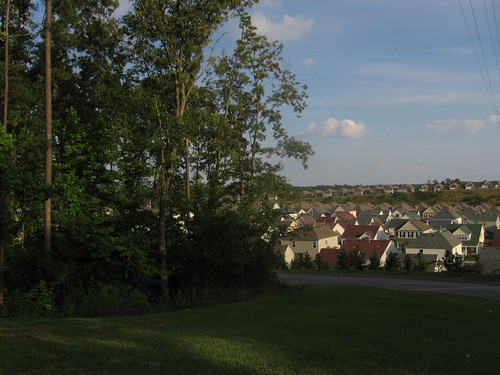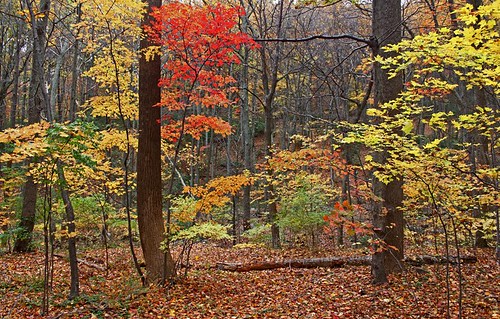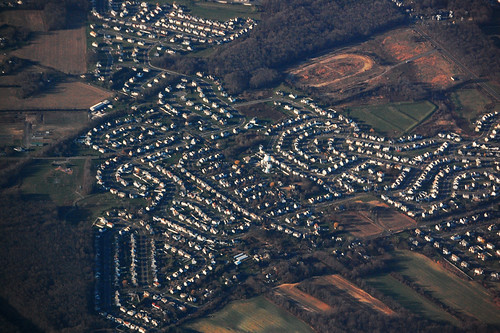Suburban sprawl could destroy up to 34 million acres of forests, says new study

Posted January 8, 2013 at 1:29PM
Scientists at the US Forest Service and partners at universities, non-profits and other agencies predict that urban and developed land areas in the US will increase 41 percent by 2060. Forested areas will be most impacted by this expansion, with losses ranging from 16 to 34 million acres in the lower 48 states. The agency highlighted the results of a new study in a press release issued last month.
The researchers also concluded that, over the long-term, climate change could have significant effects on water availability, making the US potentially more vulnerable to water shortages, especially in the Southwest and Great Plains. Population growth in more arid regions will require more drinking water. Recent trends in agricultural irrigation and landscaping techniques also will boost water demands.
The assessment’s projections respond to a set of scenarios with varying assumptions about domestic population and economic growth, global population and economic growth, global wood energy consumption and US land use change from 2010 to 2060.
The study is part of an assessment mandated under the federal Resources Planning Act. It summarizes findings about the status, trends, and projected future of forests, rangelands, wildlife and fish, biodiversity, water, outdoor recreation, wilderness, and urban forests, as well as the effects of climate change upon these resources. Key themes from the findings include these:
- Land development will continue to threaten the integrity of natural ecosystems;
- Climate change will alter natural ecosystems and affect their ability to provide goods and services;
- Competition for goods and services from natural ecosystems will increase;
- Geographic variation will require regional and local strategies to address resource management issues.
In 2010, a study by the American Farmland Trust found that 41 million acres of rural land had been permanently lost in the preceding 25 years to highways, shopping malls, and other development. The rate of recent farmland loss at the time of AFT’s report was an astounding acre per minute.
As troubling as the trends and forecasts are for forests and farms lost to development, it does not have to be this way. We need to stop the madness. Market preferences are now trending in favor of closer-in, more walkable living. Let’s build future development that responds, conserving the landscape in the process.
In particular, we need to get more serious about revitalizing the disinvested areas of our cities so that they can absorb growth that would otherwise take the form of sprawl. We need to use land more efficiently in our suburbs. As Lee Epstein and I have written, smart growth advocates need to return to our conservation roots and work more diligently to conserve land outside of current development footprints. And, for their part, high-minded urbanist planners must eschew leapfrog development; giving sprawl a more orderly design or calling it a “new town” does not make it environmentally benign. Sprawl is sprawl.
Thanks to my colleague Larry Levine for pointing me to this study.
Related posts:
- A fiscal conservative's manifesto against sprawl (September 18, 2012)
- What trees mean to communities: more than you may think (July 31, 2012)
- How the evolving housing market will help sustainable communities (April 4, 2012)
- Guess what DOESN'T stay in Vegas: sprawl (March 9, 2012)
- Let's link the working rural landscape to the sustainability agenda (with Lee Epstein) (March 1, 2012)
- Land conservation, smart growth and the environment (December 6, 2011)
- We're losing an acre of farmland every minute, according to new data (October 4, 2010)
Move your cursor over the images for credit information.


